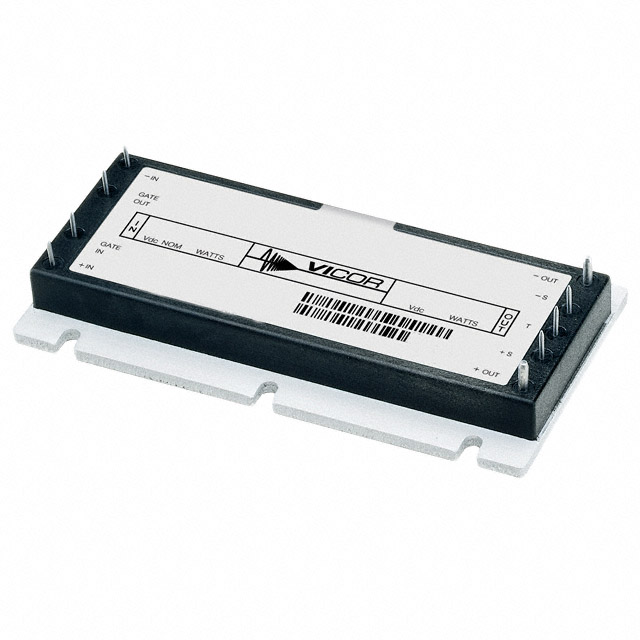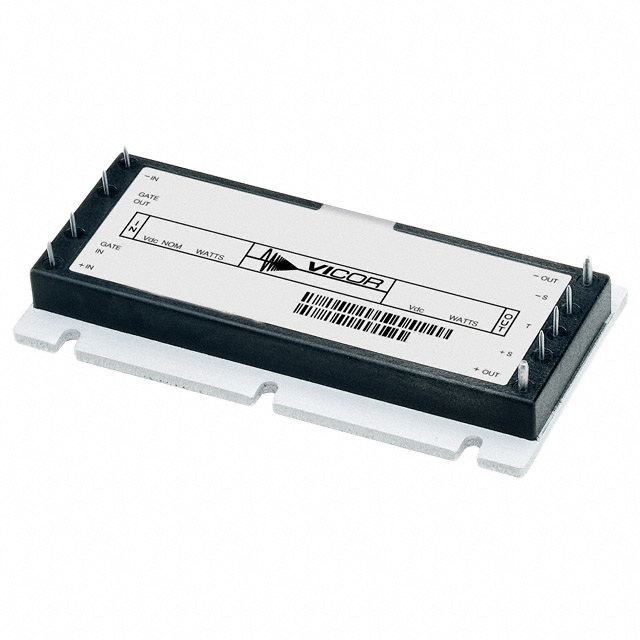
ADC vs DAC: What’s the Difference? (Practical Guide for Small-Batch Builds)
Global electronic component supplier ERSAELECTRONICS: Rich inventory for one-stop shopping. Inquire easily, and receive fast, customized solutions and quotes.
ADC vs DAC: What’s the Difference?

In short, ADCs and DACs do opposite jobs: an ADC turns analog to digital, a DAC turns digital to analog. On the ADC side you protect the sampler with an anti-aliasing filter, a stable Vref, and clean clocking; on the DAC side you smooth the stair-stepped output with a reconstruction (anti-imaging) filter and a suitable output driver. The practical focus differs too: ADC choices revolve around sampling rate, input bandwidth and ENOB, interface throughput (SPI/LVDS/JESD204) and conversion latency; DAC choices lean toward update rate, THD+N/linearity, output range/drive, and common control links (SPI/I²C). For small-batch builds and bring-up, start by measuring: use an ADC to close the loop on sensors and diagnostics; add a DAC when you must generate or bias—waveforms, set-points, or actuators. At very low speeds, PWM plus an RC filter can stand in for a simple DAC, as long as ripple and accuracy limits are acceptable.
At a Glance
ADC measures analog into digital codes; DAC creates analog from digital data—the directions are opposite.
Read more →ADC protects sampling with anti-aliasing ahead of the converter; DAC smooths steps using reconstruction, anti-imaging filters.
Read more →ADC Vref sets LSB scale for codes; DAC reference or full-scale sets output span and drift.
Read more →Delta-Sigma architectures trade latency for in-band noise shaping; other families balance speed, latency, and noise differently.
Read more →ADC links favor SPI, LVDS, or JESD204 for throughput; DAC control commonly uses SPI or I²C.
Read more →Use ADCs for measurement, sampling, and feedback; use DACs for actuation, waveform synthesis, and analog set-points.
Read more →When to Use Which
For sensors, tuning, and data logging, use an ADC to close the measurement loop.
Read more →For waveforms, set-points, audio, or actuators, use a DAC with reconstruction filtering.
Read more →At low speed and relaxed linearity, PWM plus an RC can replace a simple DAC, with ripple limits.
Read more →- Resolution: stable 12–16-bit ENOB favors external; low effective bits often suit MCU internal.
- Bandwidth: high rate, many channels, or low latency push external; slow single-channel may fit internal.
- Isolation/Noise: harsh EMI or mixed grounds suggest external converters with robust front-end and reference.
- Linearity/THD+N: tight distortion or accuracy budgets favor external; relaxed specs often accept internal.
- Interfaces: when SPI/I²C resources or throughput are constrained, external parts simplify timing and bandwidth.
Signal Chain Differences

Condition analog before sampling—buffer the source, filter out-of-band content, and hold a stable level for conversion.
- High source impedance starves the sampling capacitor, causing droop and distortion.
- Noisy or poorly decoupled Vref introduces code wander and ENOB loss.
- Clock jitter degrades SNR at higher input frequencies.
- Place RC anti-aliasing and a low-noise buffer ahead of the ADC input.
- Decouple the local reference with 10 µF ∥ 0.1 µF at the pins.
- Drive the sampling cap through long wires or high impedance.
- Feed reference or clock from noisy USB rails or switching noise.

Reconstruct smooth analog from codes—filter zero-order-hold steps and drive the load cleanly.
- ZOH steps and images leak without reconstruction, creating high-frequency artifacts.
- Output buffer slew or linearity limits inflate THD+N and blunt fast edges.
- Load and ground bounce shift bias and couple noise across domains.
- Add a properly designed reconstruction or anti-imaging filter after the DAC.
- Select a driver with bandwidth and slew rate matched to load and range.
- Drive heavy loads, motors, or long cables directly from the DAC pin.
- Ignore return paths and ground segregation near the analog driver.
Key Specs Mapped
What to watch on ADCs
- Effective bits reflect real noise and errors; datasheet resolution is only ideal.
- SNR sets the quantization floor; at high input frequencies, jitter often dominates.
- Higher sampling reduces alias hazards and latency, but stresses interface data throughput.
- Driver and anti-alias filter must pass the band without gain or phase droop.
- Pipeline and delta-sigma add group delay; account it in loops and multiplexing.
What to watch on DACs
- Output granularity is set by bits; analog noise limits how many are usable.
- Linearity, reference ripple, and driver limits largely define overall THD+N performance figures.
- Settling and glitch energy bound usable rate; zero-order hold creates spectral images.
- Headroom, load current, and impedance set swing; most applications require a buffer.
- Passband ripple, stopband depth, and phase delay shape fidelity in control or audio.
Interfaces & Throughput
ADC
- SPI delivers simple framing at modest rates; channel count is limited by throughput and controller timing.
- LVDS uses high-speed differential pairs to cut pin count; layout, pair skew, and EMI dominate risks.
- JESD204 provides deterministic multi-lane latency for wideband, synchronized, multi-channel converters and coherent sampling.
DAC
- SPI or I²C are common control links; practical update rate is bounded by bus speed and settling.
- High-speed waveform DACs use LVDS or parallel paths; board skew and crosstalk grow quickly.
- Shared clock jitter maps directly to SNR and spurs; isolate, buffer, and distribute clocks carefully.
Note: DAC interface timing and throughput considerations are largely the same principles discussed on the interfaces page.
FAQ
Is a DAC just the reverse of an ADC?
They run in opposite directions, but the chains are not symmetric. On the ADC side you protect sampling with anti-alias filters, a quiet reference, and clean clocking. On the DAC side you smooth zero-order-hold steps, manage distortion and drive. Learn the mechanics here.
Read more →Do ADC and DAC need the same resolution?
Not necessarily. Size resolution to the system error budget and bandwidth. ADC effectiveness depends on ENOB, noise, and jitter; DAC usefulness depends on THD+N, load behavior, and reconstruction filtering. Chase usable performance, not nominal bits, then balance data rate and latency.
Read more →Why does a DAC need a reconstruction filter?
A DAC’s zero-order hold produces stair-stepped output and spectral images above half the update rate. A reconstruction (anti-imaging) filter smooths steps, rejects images and glitches, and improves audible or control fidelity. It also limits out-of-band energy that can alias elsewhere in a system.
Read more →Can PWM replace a DAC?
Sometimes. At low speeds with relaxed linearity, PWM plus an RC filter can approximate a simple DAC. Expect ripple, output impedance, and limited dynamic range; precision, wideband, or low-noise outputs still require a real DAC architecture and a proper reconstruction stage.
Read more →When to choose external over MCU-integrated?
Pick external parts when you need higher ENOB, wider bandwidth, tighter linearity or THD+N, better isolation, or deterministic latency. MCU-integrated converters suit slow, single-channel, noncritical roles where board space, cost, and simplicity dominate. Evaluate interfaces and throughput, too.
Read more →Need parts that actually ship?
Send your specs or BOM and get three safe options in 48 hours—ADC/DAC choices with indicative lead time, price range, and basic front-end/driver notes.
- 3× options: compatible alternatives with clear risk notes.
- Availability insight: indicative lead-time and price ranges from real channels.
- Engineering hints: front-end/Vref/driver tips for quick bring-up.
Supports Cut-Tape / Partial Reel / AEC-Q.
Related Articles
- ·ICD Electronics: Tiny Lightning, Relentless Reliability
- ·Smart Pill Dispensing Electronics: From Missed Doses to Mission Control
- ·Conditional Access Module (CAM): The Pay-TV Gatekeeper Engineers Actually Enjoy Reading About
- ·NC Formula Semiconductor: The Blockbuster Guide You Didn’t Know You Needed
- ·Electrosurgery Electronics: Turning RF Into a Surgical Superpower
- ·Endoscopic Imaging Electronics: Tiny Optics, Big Picture
- ·Instrument Cluster: The Dashboard Wizard That Makes You Feel Like Iron Man
- ·X-ray & CT Electronics: From Kilovolts to Reconstruction
- ·MRI Core Electronics: From Quench to K-Space
- ·OKL Series PoL DC/DC Converters: The Bite-Size Power Bricks That Keep Your Board Cinematic











.png?x-oss-process=image/format,webp/resize,h_32)










